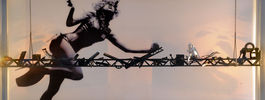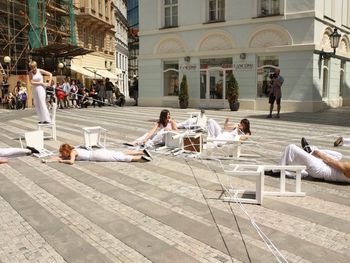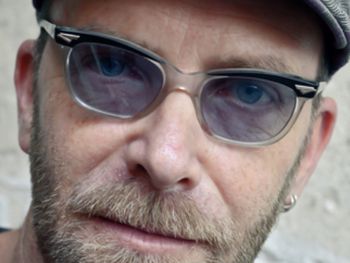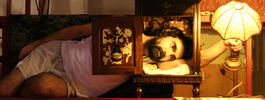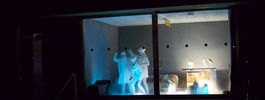
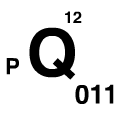
2011 » Sweden » Architecture Section
| Curator: | Torsten Nobling |
| Designer / Architect of exhibition: | Torsten Nobling |
| Institution: | STTF, Svensk TeaterTeknisk Förening, Swedish OISTAT Centre |
KTH R1
Sweden has chosen to present a space originally built for a completely different purpose, transformed into what it is used for today. R 1 was the first nuclear reactor in Sweden. It was a research reactor located in the rocks 25m below the Royal Institute of Technology (KTH), not far from the city of Stockholm. The reactor was active from July 13, 1954 to June 6, 1970. The reactor has since been removed, and the remaining reactor hall was out of use until late 1990 when KTH Media started to use the space for different kinds of performances and media research. Over the past 10 years, various kinds of crossover performances have been carried out here. The public has thus had the opportunity to listen to acoustic and electro-acoustic concerts, with flutes duelling Moog synthesizers. The German musician Rochus Aust composed the music to “The Futuristic Kitchen”, a 100-year celebration of Futurism. The Swedish production and distribution organization Riksteatern, in cooperation with Cullbergbaletten, performed a “silent” dance performance named “Vibragera,” with only vibrating low-frequency sound coming from the loudspeakers, accompanied by four dancers of which two were deaf. A later production is the experimental performance “Opera Mechatronic”. Eight sculptures, either singing or accompanied by sound, perform robotic dance movements. Other theatre performances and art exhibitions have proven that R 1 is an excellent space for all kinds of cultural events. Other activities showing the possibility of the space are photographic exhibitions. Even weddings have taken place in the former reactor hall. KTH R1 is not only a performance space but also one of the locations used by “Mediated Spaces and Presence Design”, an interdisciplinary research group with combined skills in architecture, media technology, anthropology, film and television. The groups’ studies are focused on spatial and technical design aimed at enabling a mutual gaze and supporting remote presence in synchronous video-mediated spaces. R 1 is proof that a space originally designed for highly technical purposes can be transformed into an interesting performance space for crossover productions. P.S. The radiation in the former reactor hall is now lower than the natural radiation found above ground.
